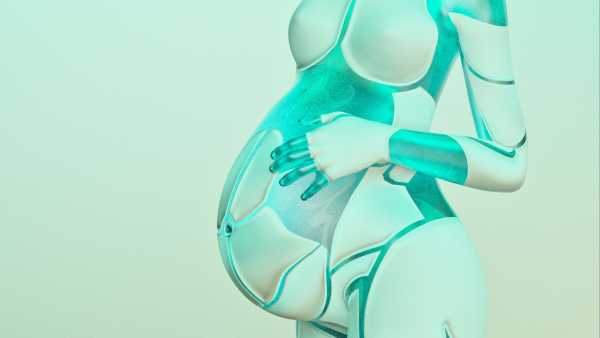
A false story about a so-called pregnancy monitoring robot being developed in China has been circulating online this week. (Photo: Donald Ian Smith via Getty Images)
Strange images have been flooding news feeds this week, as news emerged of a new “pregnancy robot” being developed in China. The images showed plump babies curled up in the bellies of chrome robots, with visible wires and plump bodies despite having no breasts.
Many publications, including Newsweek, The Economic Times, and ChosunBiz, named Chinese publication Kuai Ke Zhi as the source of the information. Zhang Qifeng, the developer of the bot, which is designed to carry a pregnancy from conception to birth, told the publication that the prototype will be ready as early as 2026, priced at less than 100,000 yuan (about $13,900).
“Some people don’t want to get married but still want a ‘wife’; some don’t want to get pregnant but still want a baby,” Zhang said, according to Newsweek. The “mature” artificial womb technology simply “needs to be implanted in the abdomen of a robot so that a real person and a robot can interact to achieve pregnancy,” he said, according to ChosunBiz. The nature of this human-robot interaction was not detailed.
You may like
-

Incredible, first-of-its-kind video showing the implantation of a human embryo in real time.
-
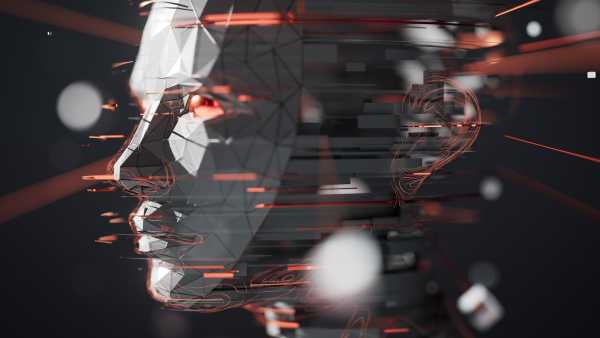
'Reckless at Best, Misleading and Dangerous at Worst': Don't Believe the Hype – Here's Why AI Isn't What Billionaires Tell You
-
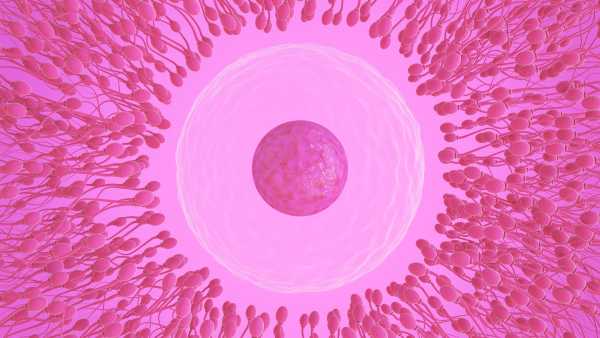
Sperm selection is 'entirely dependent on the egg' – so why does the 'sperm race' myth persist?
Depending on the article, Zhang was referred to as the CEO or founder of Guangzhou-based Kaiwa Technology, or as a PhD candidate affiliated with Nanyang Technological University (NTU) in Singapore. After finding no evidence of Kaiwa Technology online, Live Science contacted NTU about their alleged connection to Zhang Qifeng.
“We would like to inform you that no one named Zhang Qifeng graduated from NTU with a PhD,” an NTU spokesperson told Live Science in an email. “Our checks also show that no similar research related to ‘gestation robots’ has been conducted at NTU.”
As you may have suspected — and as Snopes has confirmed — a pregnancy robot doesn’t exist. But the viral story has raised questions about the potential of artificial womb technology. Is it possible to build a pregnancy robot? Or is the concept pure science fiction? Live Science spoke to experts about the idea, discussing whether it’s technically feasible and whether it’s worth trying at all.
“Should we do this? My answer is a resounding no,” said Dr. Harvey Kleeman, director of the Division of Reproductive and Placental Research at Yale University School of Medicine. “However, I think it’s intellectually interesting to think about these issues because it helps us really understand what the beauty and wonder of normal pregnancy is.”
Artificial wombs?
The pregnancy-monitoring robot is a sham, but scientists are developing artificial wombs. At the Children's Hospital of Philadelphia (CHOP), scientists are developing a womb-like device called the Extra Uterine Developmental Environment for Newborns, or EXTEND. The plan is to eventually use it to support babies born extremely prematurely, between 23 and 28 weeks of pregnancy.
Recent advances have reduced the death rate associated with preterm birth, but health problems including chronic lung disease and neurodevelopmental disabilities still pose serious concerns for babies born so early. To reduce these risks, CHOP researchers are looking to create a womb-like environment in which babies could be placed after birth to help them survive past 28 weeks.
The device includes a sac filled with amniotic fluid, which is produced in a laboratory and contains key nutrients and growth factors. The umbilical cord is attached to an “external oxygenator,” which partially replaces the placenta, facilitating the exchange of oxygen and carbon dioxide. Inside the device, the baby will be protected from changes in temperature, pressure, light, and exposure to microbes.
So far, EXTEND has been tested on lambs. In a 2017 paper, the team showed that lamb embryos could survive in the device for up to a month, and their development continued much as it would in the womb. In a 2024 paper, they collaborated with researchers at Duke University to study how EXTEND affected gene activity in the brain. The device helped preserve gene activity in the brains of premature lambs, making it similar to that of lambs that had been in the womb for much longer.
Meanwhile, some researchers are working on creating artificial placentas that would serve the same function as EXTEND, supporting premature babies. These devices have also been tested on lambs, but they are a long way from being tested in humans.
The EXTEND team intends to begin human trials soon, although there are questions about when and how it would be ethical to test the device, given that many premature babies have a chance of survival with existing technology.
“In a human setting, a couple of weeks is not enough,” said Dr. Lusine Agadzhanova, a reproductive scientist and associate professor of obstetrics and gynecology at Stanford University School of Medicine, referring to the length of the trials conducted so far on lambs. “This study shows that the concept is feasible, but it’s more complicated than we think,” she told Live Science.
Throughout their work, EXTEND's developers have emphasized that the device is intended to act as a bridge for premature babies emerging from the womb, and is not intended to stimulate fetal viability before 23 weeks. Of course, there is a big difference between keeping a sick child alive and carrying a child from conception, as the fake Kaiwa robot gynecologist was supposed to do.
Like a “tomato plant suspended in water.”
Presumably, the pregnant robot will have to deal with a particularly tricky part of pregnancy: implantation.
In a pregnancy without stimulation of the reproductive system, the egg travels down the fallopian tube, where it is usually fertilized, and then travels to the uterus and implants in its wall. In fertility treatments such as in vitro fertilization (IVF), the fertilized egg is placed in the uterus, where ideally it will then implant. This aspect of the treatment is not directly controlled by doctors.
In a robotic incubator, however, implantation may not be a critical step, Kliman said. “I think of hydroponics,” he said. “Imagine a tomato plant suspended in a bucket of water, right?”
Like the EXTEND studies with lambs, he says, a human embryo could theoretically be suspended in fluid rather than embedded in something like the uterine wall. The real challenge is ensuring the embryo is suspended so it can grow unimpeded and has enough nutrients and growth factors. In such a design, the placenta “doesn’t really have to be attached to anything or embedded in anything,” Kleeman says.
Agadzhanova, on the other hand, believes that re-creating implantation will be crucial. “Implantation is absolutely critical,” she said. “It’s the seed and the soil,” referring to the embryo and the uterine lining. She argued that abnormalities in the uterine lining can disrupt both fetal growth and placental development, so a robotic consultant would likely require some kind of tissue replacement.
I'm just trying to imagine a system that could run flawlessly for nine months and not get infected.
Dr. Harvey Kliman, Yale University School of Medicine
Even if the implantation problem is resolved, delivering the necessary nutrients to the fetus at the right time can still be a challenge.
Early in pregnancy — up until about eight weeks — glands in the uterine lining produce nourishing “milk” for the developing embryo and placenta. At this stage, blood flow from the mother to the uterus is not yet fully established, in part because the mother’s blood is too oxygenated, Kliman explained. “This high-oxygen state produces too many free radicals and damages the DNA of the dividing embryo,” he said, so the uterus maintains a low-oxygen state early in development.
Robotic pregnancies require careful re-creation of the transition from low to high oxygen levels, as well as maintaining a maternal environment and providing it with nutrients for several months at a time. According to Agadzhanova, the mother's metabolism changes significantly during pregnancy, so it is difficult to determine what dose of oxygen is needed at any given stage of development.
“It’s mind-boggling to me. I’m just trying to imagine a system that could run perfectly for nine months and not get infected,” Kliman said, meaning it wouldn’t be exposed to microbes that could ruin the entire process. “We’re talking about extreme testing just in terms of equipment, reliability, nutrients, waste management — and again, frankly, I think the biggest challenge would be infection.”
While these aspects of an artificial womb are complex, in other ways it may be simpler than human reproduction, Kliman mused. During human pregnancy, the embryo and placenta must be protected from the mother’s immune system to avoid becoming foreign organisms. In addition, the uterus undergoes changes to create a suitable environment for the embryo, and the placenta secretes hormones that prepare the mammary glands to produce milk. These factors are irrelevant in an artificial womb, he said.
Questions arise about how the fetus' immune system might develop differently in a robot. During human pregnancy, antibodies are transferred from the mother's blood to the fetus through the umbilical cord. This is why various vaccines are given late in pregnancy: the vaccines stimulate the mother to produce antibodies, these antibodies are passed on to the fetus, and newborns are born with some protection against dangerous infections. In addition, additional antibodies are passed on that are not related to vaccination.
Given that robots lack immune systems, developers of a pregnancy-monitoring robot may have to figure out how to replicate the process, perhaps using lab-created antibodies or donated blood.
“I don’t think it would be that difficult,” Kliman said. He speculated that some of those antibodies could arrive after birth through breast milk or formula containing lab-grown antibodies. And you might take extra precautions to prevent your baby from being exposed to too many germs early on if you knew it could be dangerous, he added.
In the womb, the immune system must avoid attacking the growing fetus while protecting it from pathogens, Agadzhanova said. The first factor may not be relevant in a robotic pregnancy, but the second defense would still be necessary, she added.
Unanswered questions
An additional factor to consider may be the vaginal microbiome, which contains bacteria, fungi, and other microorganisms that research shows affect the health of the developing fetus. Determining how and what exactly to deliver to the robot to mimic this complex microbial community may be challenging, since we don’t fully understand which types of microorganisms are beneficial for fetal development.
Agadzhanova added that the loss of the microbiome would likely result in plastic components in the robot itself. It's unclear how all that plastic might affect early development, but she doesn't think it's likely to have a positive effect.
Other questions cloud the idea of a pregnancy robot: How will the eggs and sperm be obtained? Whose gametes will be used to test and optimize the device to prove its ability to produce live births? Where can such research be legally conducted? Will fertilization occur within the bot itself, or through a lab procedure similar to IVF? Who will be responsible for maintaining and monitoring the bot’s functions throughout the “pregnancy”? What will the birthing process look like for a robot, and will engineers be needed in the maternity ward? Are there unknown aspects of human pregnancy that will be missed by a baby grown in a machine?
RELATED STORIES
— Scientists have invented the first “vagina on a chip”
— Vulvar infections associated with flesh eating have been reported in three cases.
—New mRNA injection a step forward in the search for a cure for preeclampsia
In our current reality, many of these questions remain unanswered, but they would certainly make a compelling premise for a science fiction novel.
“It’s good science fiction, but in short, it doesn’t exist yet,” Agadzhanova said. “And we’re not that desperate [for such technologies], especially in the U.S.” In the United States, patients have access to fertility treatments, donor eggs, and surrogacy, she added.
Kliman, for his part, said his main takeaway from the thought experiment was “what a miracle pregnancy is.”
“We're just little, weak creatures trying to figure out a way to do this artificially, and look what nature has done,” he said. “And it happens four million times a year in our country; we have normal births. That's a miracle.”
Disclaimer
This article is for informational purposes only and does not provide medical advice.

Nicoletta Lanese. Social Links Navigation. Editor of the Health Channel.
Nicoletta Lanez is the Health Editor at Live Science and previously served as the site’s news editor and staff writer. She holds a certificate in science communication from the University of California, Santa Cruz, and degrees in neuroscience and dance from the University of Florida. Her work has appeared in The Scientist, Science News, Mercury News, Mongabay, and Stanford Medicine Magazine, among other publications. Based in New York City, she is also an avid dancer and performs in productions by local choreographers.
You must verify your public display name before commenting.
Please log out and log back in. You will then be prompted to enter a display name.
Exit Read more
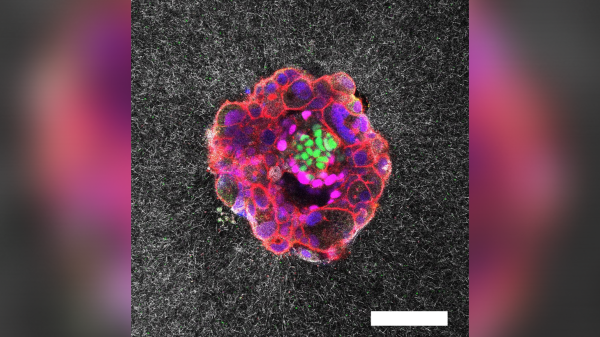
Incredible, first-of-its-kind video showing the implantation of a human embryo in real time.
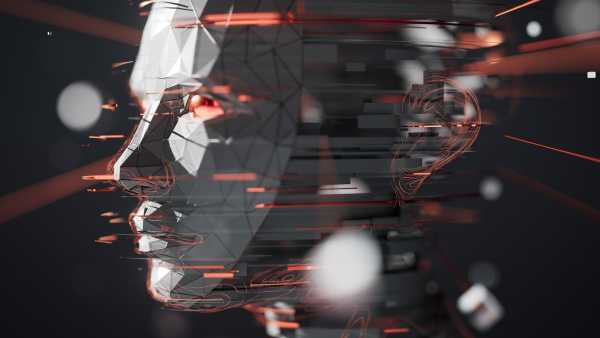
'Reckless at Best, Misleading and Dangerous at Worst': Don't Believe the Hype – Here's Why AI Isn't What Billionaires Tell You

Sperm selection is 'entirely dependent on the egg' – so why does the 'sperm race' myth persist?

Scientists Grow Mini Amniotic Sacs in Lab Using Stem Cells
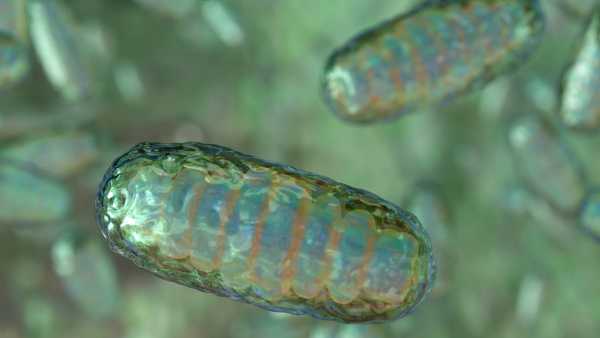
8 Children Saved From Potentially Deadly Inherited Diseases Thanks to New IVF Study Using 'Mitochondrial Donation'

Watch This Robot Cannibal Grow Bigger and Stronger by Eating Smaller Robots Latest News on Fertility, Pregnancy, and Childbirth

If 'pregnancy robots' were a reality, would you use them?
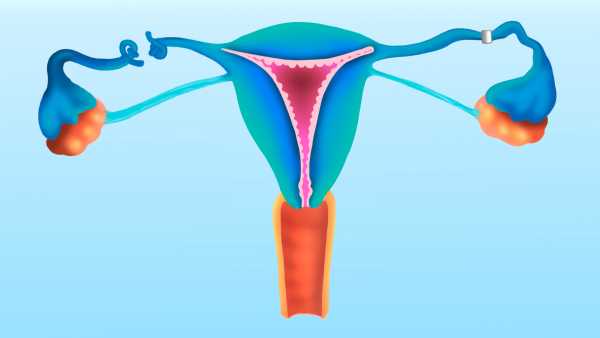
How does the tubal ligation procedure work?

“We know what to do; we just need to implement it.” Pregnancy in the U.S. is more dangerous than in other rich countries. But we can fix it.
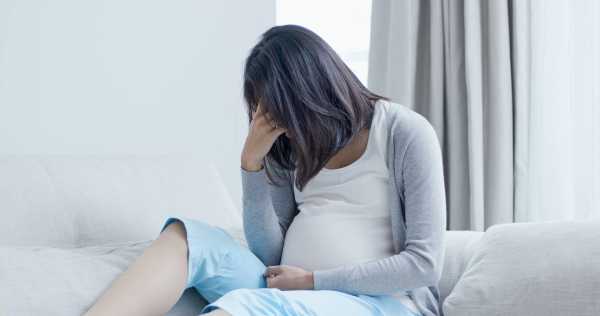
An FDA panel has questioned the safety of antidepressants during pregnancy. Here's what the science really says.
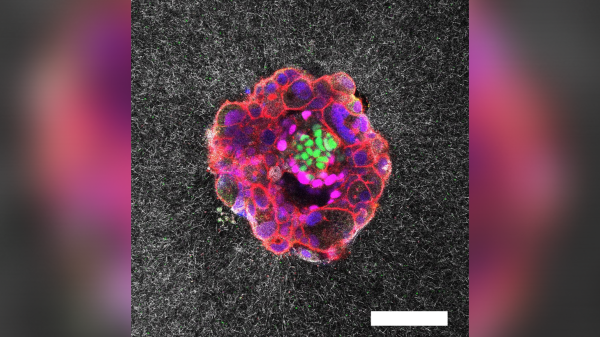
Incredible, first-of-its-kind video showing the implantation of a human embryo in real time.

How does the next day contraceptive work? Latest news
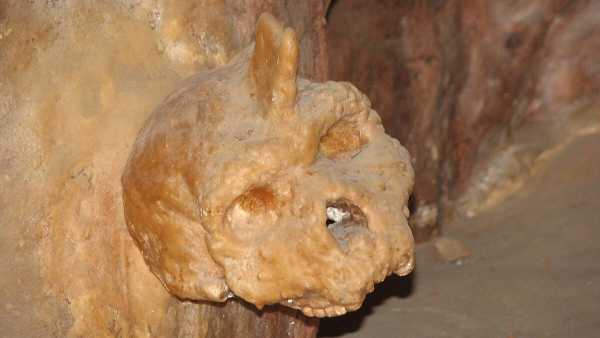
Mysterious 300,000-year-old Greek cave skull was neither human nor Neanderthal, study finds

James Webb Telescope Captures Brightest FRB Ever Recorded

'We never had concrete evidence': Archaeologists discover Christian cross in Abu Dhabi, proving 1,400-year-old settlement was once a monastery
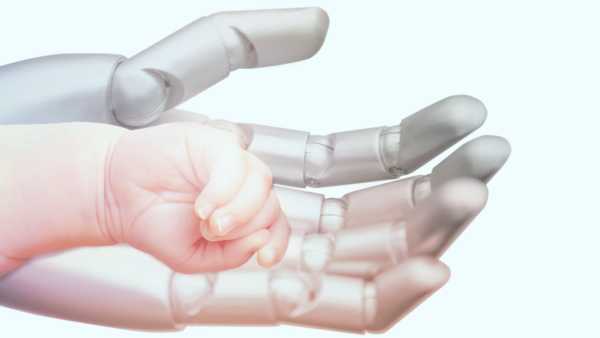
If 'pregnancy robots' were a reality, would you use them?

Surprising results show that toxic chemicals polluting groundwater are formed in the stratosphere.

Asteroids Bennu and Ryugu May Be Long-Lost Siblings, Hints JWST LATEST ARTICLES

1A study has found that a mysterious 300,000-year-old skull from a Greek cave was neither human nor Neanderthal.
Live Science is part of Future US Inc., an international media group and leading digital publisher. Visit our corporate website.
- About Us
- Contact Future experts
- Terms and Conditions
- Privacy Policy
- Cookie Policy
- Accessibility Statement
- Advertise with us
- Web Notifications
- Career
- Editorial Standards
- How to present history to us
© Future US, Inc. Full 7th Floor, 130 West 42nd Street, New York, NY 10036.
var dfp_config = { “site_platform”: “vanilla”, “keywords”: “type-news-analysis,serversidehawk,videoarticle,van-enable-adviser-
Sourse: www.livescience.com





